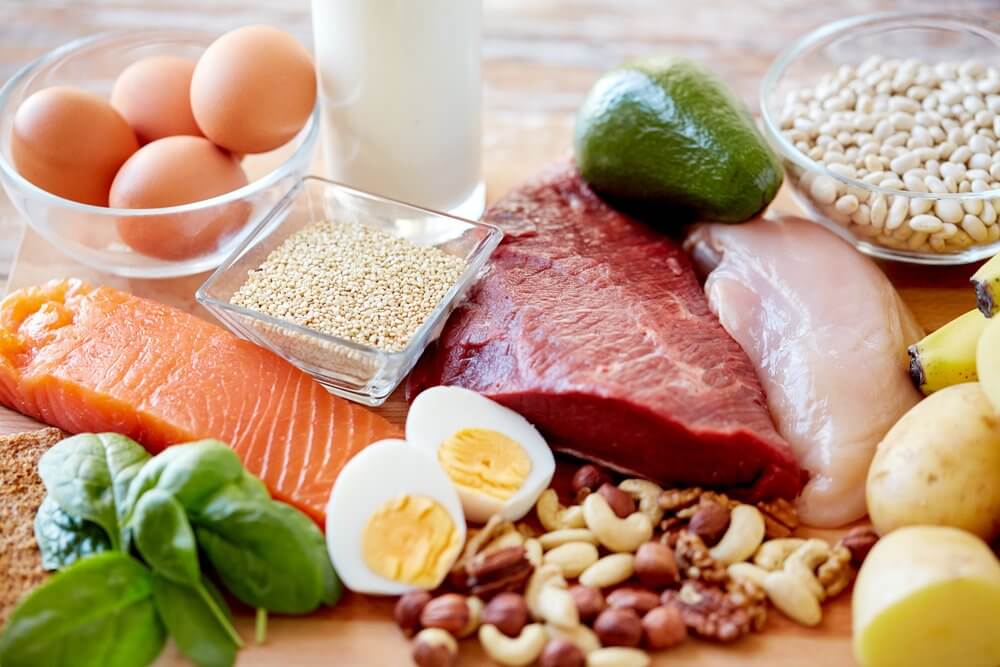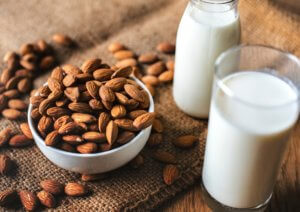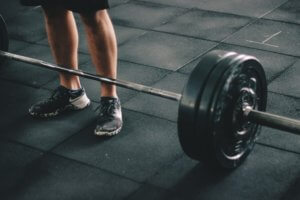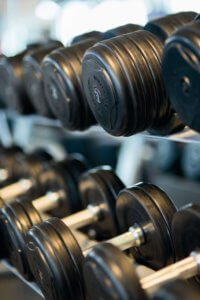While we’re used to being told that calorie needs decrease as we age due to slowing metabolisms, a message that often gets lost is that our protein needs actually increase. Why is that and how can we alter our lifestyles to better maintain muscle mass into old age?
 What is Protein?
What is Protein?
Before we answer those questions, let’s back up and talk about what protein actually is.
A healthy diet consists of three macronutrients: carbohydrates (such as grains and fruits), fats (including oils and nuts), and protein. They’re called “macro” as we need them in large amounts, compared to vitamins and minerals, which are micronutrients.
Protein is often found in animal products, such as beef, chicken and fish, as well as in plant-sources like beans, tofu, and nuts. Made up of amino acids, protein can be thought of as the structure of the human body.
While protein has numerous functions in the body, the primary one’s are:
- Building and repairing muscle and tissues
- Regulating digestion and metabolism
- Regulating hormone levels and actions required for growth and development
- Act as antibodies for a healthy immune system
- Provide cell structure for strong and healthy skin, nails and hair
So, as you can see, protein is a pretty big deal.
Why do Protein Needs Increase?
It may seem obvious that young children and teenagers have increased protein needs as these are times of substantial growth and development, not everyone is aware that protein needs increase again in late adulthood.
The current RDA (recommended daily allowance) for protein intake in adults is 0.8 grams per kg of body weight. So, for example, an adult weighing 150-lb (68 kg) needs about 55 grams of protein per day (which is the same amount of protein in just 6 ounces of meat).
However, that number is actually the minimum amount of protein most adults need per day. The actual amount an individual needs depends on her/his age, muscle mass, activity level, presence of an illness or injury, and age.
Starting around age 50, adults lose an average of 1% total muscle mass each year – a condition known as sarcopenia. Besides making us weaker, low muscle mass increases our risk for disability and increased mortality with age.
The main reason for this decline is that as we age, our bodies no longer respond to normal growth signals, resulting in a more rapid breakdown of muscle and slower muscle cell growth.
And on top of breaking down muscle faster, we also can’t build muscle as quickly or efficiently due to changes in hormones, specifically reduced testosterone levels, and decreased efficiency in using amino acids for protein synthesis.
Other factors that can accelerate muscle loss in older adults include more sedentary lifestyles, reduced calorie and/or protein intake due to changes in appetite, taste, and chewing difficulties, and inflammation from chronic diseases that disrupt the normal balance of muscle breakdown and synthesis.
But there’s good news as science has shown that there are ways not only to slow down the breakdown of muscle, but even grow muscle as we age through increased protein intake and physical activity.
How Much is Enough?
While the answer varies with each individual, current studies suggest that most people over 65 years of age should consume 1 – 1.2 grams of protein per kg of body weight per day to gain and maintain muscle mass and function.
So going back to our 150 lb individual, that would be about 68 – 82 grams of protein per day.
Working with a registered dietitian is a great way to find out exactly how much protein you need to maintain and build muscle mass based on your lifestyle.
 Optimizing Nutrition
Optimizing Nutrition
So how can you optimize your protein intake to maintain muscle mass?
While it’s important to eat a variety of protein sources, animal and plant-based, focusing on high quality proteins is key, especially if you’re highly active or find your appetite is decreasing with age.
High quality proteins are those with all nine amino acids in amounts that are ideal for growth and development. One amino acid in particular that’s essential for muscle tissue synthesis is leucine.
While animal products provide the most leucine, nuts, beans, and soybeans are also good sources.
Whey protein (found in dairy) is particularly high in leucine. And while I recommend whole food sources first, for those having difficulty consuming enough protein throughout the day, buying a high-quality whey protein powder can be an easy way to get more leucine.
Other non-animal sources of high-quality proteins include quinoa (a good substitute for rice), buckwheat, whole soy (such as soybeans, soy milk and tofu), rice and beans, and hummus with pita bread.
It’s clear that getting adequate protein as we age is important; however, how do you increase protein intake without over-eating? Or for some, the question may be: how do you increase protein intake when your appetite is decreased?
The answer is similar for both: incorporate lean protein sources at every meal and snack.
While meals may be a little more obvious, when it comes to snacks, we often think of chips, cookies, or fruit. However, a key to getting adequate, healthy sources of protein is thinking of snacks as mini-meals that contain at least two, if not all three, macronutrients. So rather than eating a banana for breakfast, pair it with a tablespoon of peanut butter or slice it up and mix into Greek yogurt.
And remember, food is just one piece of the equation.
 Staying Active
Staying Active
As important as diet is, there’s evidence that exercising is actually the most effective way to maintain muscle mass.
Above we mentioned that as we age, our bodies can’t build protein as efficiently, exercise has actually been shown to increase the efficiency of muscle protein synthesis in older adults.
And the best way to do this is through a combination of aerobic exercise and resistance training.
In a study of 57 adults aged 65-94, resistance exercise three days per week significantly increased muscle strength over 12 weeks. Before starting any weight training, it’s important to learn proper form and get the approval from your doctor.
As for cardiovascular exercise, it’s important to pick an activity that you enjoy and that will get your heart rate up for a sustained period of time. Bad knees? Stick with swimming. Can’t stand the gym? Cycling can also be easier on the joints while hiking can give your workout more of a purpose.
And remember, f you have an injury or physical limitation, working with a physical therapist is a great way to find safe ways to stay active.








